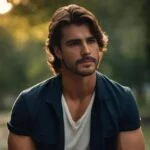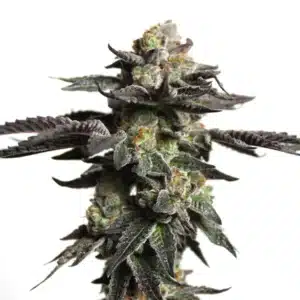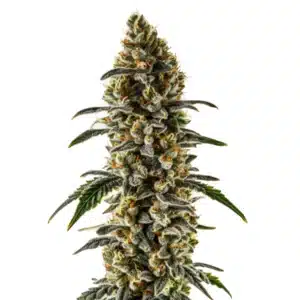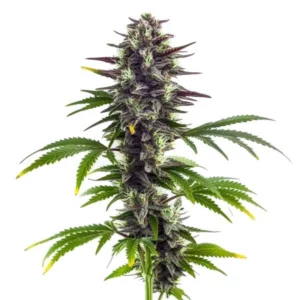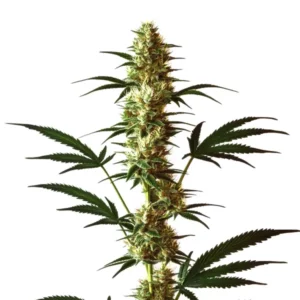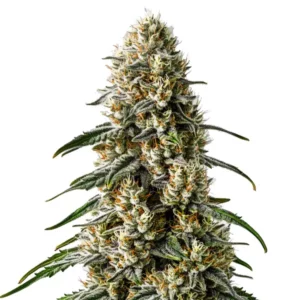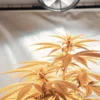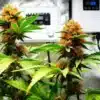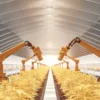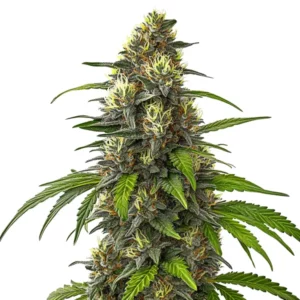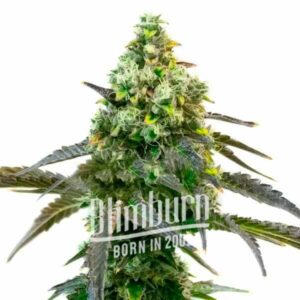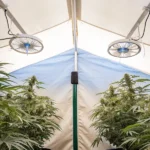
Flowering Light Cycles for Pot Plants: Getting It Right
Importance of Light Cycles for Pot Plants
When it comes to cultivating cannabis indoors, understanding the importance of lighting schedules is pivotal. The light cycle for pot plants during the flowering phase is when they transition from vegetative growth to bud production, requiring a careful balance of light and darkness. Indoor growers need to replicate this rhythm artificially to guide plant development effectively.
Standard Schedules (12/12) in the Light Cycle for Pot Plants
Before triggering bloom, cannabis plants are kept in a vegetative stage with a longer light period, typically 18 hours of light and 6 hours of darkness (18/6). Some growers use 24 hours of continuous light to accelerate growth, but this can sometimes stress the plants as they have no rest period. The go-to light schedule to initiate the flowering stage in an indoor cannabis grow is the 12/12 cycle—12 hours of light followed by 12 hours of total darkness.
Recommended Strains
Zombie Death Fuck
|
|
THC | 23% (Medium) |
|
|
Type | Feminized |
|
|
Yield | Medium |
|
|
Phenotype | 50% Indica / 50% Sativa |
Sweet Zombie
|
|
THC | 20% - 25% (Medium) |
|
|
Type | Feminized |
|
|
Yield | High |
|
|
Phenotype | 80% Indica / 20% Sativa |
Still, not all cannabis strains respond the same. Some sativas or hybrids may respond better to slightly longer light periods, like 13/11. Consistency is essential; once you find what works, stick with it to avoid stressing your plants.
Adjusting Light Hours for Better Growth
Tweaking your light cycle can be a total game-changer. Some cultivators begin with a gradual transition from a longer light phase like 16/8 before switching to 12/12 to reduce stress.
Light intensity also matters. During vegetative growth, blue or cool-toned lights are ideal. But when switching to flower, your plants need warmer, red-dominant light. This is where HPS (high-pressure sodium) lights with 400w or 600w output shine, offering the red and orange spectrum that promotes rich, dense buds.
Promos & Deals
Optimizing the Light Cycle for Pot Plants
Optimizing the light cycle goes beyond just setting a timer. It involves syncing your entire environment. Keep your grow space within 65°F to 80°F during flowering, and maintain humidity between 40–50% to avoid mold. Combine this with lighting that replicates the warmer tones of the autumn sun to fully trigger flowering responses.
Effects on Bud Development Under the Right Light Cycle
The results of a properly managed light cycle are clear: denser buds, stronger aromas, and higher cannabinoid content. Adequate light exposure supports resin production. The flowering phase benefits most from lighting rich in red and far-red tones. With the right combination of color and duration, your buds won’t just grow, they’ll thrive.
Troubleshooting Issues in the Light Cycle for Pot Plants
Running into problems with your light cycle can be frustrating. Issues like light leaks, bad timers, or inconsistent schedules can confuse your plants.
Light leaks are one of the most common problems. Even small gaps can confuse your plant. Take time to thoroughly inspect your grow space for stray light and patch leaks using blackout tape or thick covers.
Preventing Leaks and Light Stress
Light stress is a silent yield killer. If your pot plants get light during their designated dark period, it can interrupt flowering and even lead to hermaphroditism. A major risk is ‘revegetation.’ If the dark cycle is broken, the plant’s internal clock gets confused, and it will stop flowering and try to revert to vegetative growth. This stressful process causes twisted, strange-looking new leaves to grow directly out of the buds and can delay the maturation of your harvest by 15 days or more. Use high-quality timers and check your settings often.

Environmental Factors That Complement the Light Cycle for Pot Plants
To truly succeed, you must harmonize environmental variables like temperature, humidity, and CO₂ levels with your lighting.
Temperature and Light Synergy
Temperature plays a direct role in how pot plants interpret the light cycle. Reproducing a natural day/night temperature drop in your grow room helps plants sync their metabolic processes. Maintain daytime temps of 70°F to 80°F, and allow a 5–10 degree drop at night.
However, it’s crucial that this temperature difference isn’t too extreme and that the ‘night’ temperature does not fall below 12°C (about 54°F), as this can shock the plants. To manage this, many expert growers, especially in winter, run their light cycles during the actual night. This uses the heat from the lamps to keep the grow room warm when the outside temperature is at its coldest, preventing a sharp drop when the lights turn off.
CO₂ and Flowering Efficiency
CO₂ enrichment can supercharge your flowering process when paired with a well-managed light cycle. Supplemental CO₂ during daylight hours can significantly improve growth, but it must be matched with strong lighting and stable conditions. However, you must be very careful. While beneficial, introducing too much CO₂ during the flowering stage can have negative effects, causing the buds to stretch, open up, and lose their desired density.

FAQS
What are the main differences between greenhouse weed and indoor weed?
The primary differences between greenhouse weed and indoor weed lie in the cultivation environment, light source, and control over growing conditions. Greenhouse weed benefits from natural sunlight, while indoor weed relies on artificial lighting and precise environmental controls.
Which method produces higher potency cannabis?
Both greenhouse and indoor methods can yield high potency cannabis, but greenhouse-grown cannabis often benefits from natural sunlight, which may enhance THC levels. Indoor cultivation can achieve high potency through controlled conditions and advanced growing techniques.
Is one method more cost-effective than the other?
Greenhouse cultivation can be more cost-effective due to lower energy costs from natural sunlight. However, initial setup costs can be high for both methods, and ongoing maintenance varies depending on the technology used in indoor growing.

